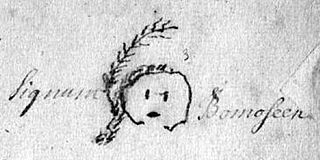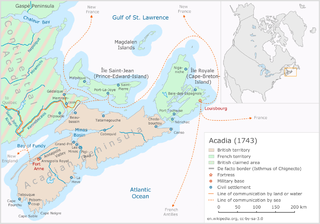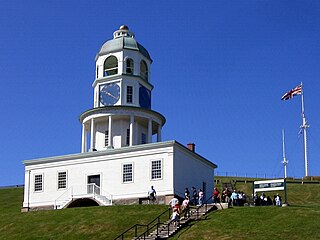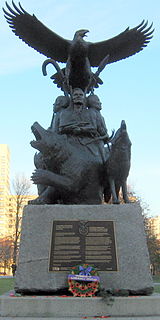Related Research Articles

Monticello is a town in Aroostook County, Maine, United States on the northern branch of the Meduxnekeag River. The population was 737 at the 2020 census. Originally known as Wellington Township, it was settled in 1830 by General Joel Wellington, who owned it, and incorporated in 1846. Some of the earlier migrant workers of Monticello were called the “Amerisee” - a currently disbanded tribe whose members consisted of tribal people from all five Wabanaki Maine tribes, who traveled together as migrant seasonal workers. Many of them had settled in the Monticello and other Aroostook County areas. The word “Amerisee” comes from the Mi’kmaq word “Amase’jijg” which means “some distance” or “quite far” in reference to the distance they traveled for work, which often included all areas of Canada and Aroostook County Maine. The Matthew(s) family shows up in the 1900 Census for Monticello Maine. They had intended to form a sixth tribe - one that accepted members from all five tribes who were originally one tribe, but due to colonization, it had been split up into the five groups known today. The Amerisee wished to reunite the five tribes. The attempt ultimately failed and the Amerisee tribal members, were reabsorbed into their tribes of origin. John Matthew, who is listed on the 1900 Census in Monticello Maine along with his family, writes that he is “Amerisee” however under “Tribe of Father of this Indian” and “Tribe of Mother of this Indian” he says they were both “mi’kmaw” which is the Mi’kmaq word for “Mi’kmaq”. His children were listed as Frank, Lizzie and Annie (Anastasia) Matthew. His parents were Frank and Bertha Matthew(s). He was also a basket maker. According to his death record, he was born in “Restigouche Ind.” territory, which is a testament to how far they would travel to reach farmland in places such as Monticello. John Matthew and other families like his, make up an interesting Native American element to Monticello’s migrant seasonal and farm work history. International shortwave broadcast station WBCQ is located here.

Queen Anne's War (1702–1713) was the second in a series of French and Indian Wars fought in North America involving the colonial empires of Great Britain, France, and Spain; it took place during the reign of Anne, Queen of Great Britain. In Europe, it is generally viewed as the American theater of the War of the Spanish Succession; in the Americas, it is more commonly viewed as a standalone conflict. It is also known as the Third Indian War. In France it was known as the Second Intercolonial War.

King George's War (1744–1748) is the name given to the military operations in North America that formed part of the War of the Austrian Succession (1740–1748). It was the third of the four French and Indian Wars. It took place primarily in the British provinces of New York, Massachusetts Bay, New Hampshire, and Nova Scotia. Its most significant action was an expedition organized by Massachusetts Governor William Shirley that besieged and ultimately captured the French fortress of Louisbourg, on Cape Breton Island in Nova Scotia, in 1745. In French, it is known as the Troisième Guerre Intercoloniale or Third Intercolonial War.

Indigenous peoples of the Northeastern Woodlands include Native American tribes and First Nation bands residing in or originating from a cultural area encompassing the northeastern and Midwest United States and southeastern Canada. It is part of a broader grouping known as the Eastern Woodlands. The Northeastern Woodlands is divided into three major areas: the Coastal, Saint Lawrence Lowlands, and Great Lakes-Riverine zones.

The Treaty of Watertown, the first foreign treaty concluded by the United States of America after the adoption of the Declaration of Independence, was signed on July 19, 1776, in the Edmund Fowle House in the town of Watertown, Massachusetts Bay. The treaty established a military alliance between the United States and the St. John's and some of the Mi'kmaw bands against Great Britain for the early years of the American Revolutionary War.

The Treaty of Portsmouth, signed on July 13, 1713, ended hostilities between Eastern Abenakis, a Native American tribe and First Nation and Algonquian-speaking people, with the British provinces of Massachusetts Bay and New Hampshire. The agreement renewed a treaty of 1693 the natives had made with Governor Sir William Phips, two in a series of attempts to establish peace between the Wabanaki Confederacy and colonists after Queen Anne's War.

The Wabanaki Confederacy is a North American First Nations and Native American confederation of four principal Eastern Algonquian nations: the Miꞌkmaq, Maliseet (Wolastoqey), Passamaquoddy (Peskotomahkati) and Penobscot. The Western Abenaki are also considered members, being a loose identity for a number of allied tribal peoples such as the Sokoki, Cowasuck, Missiquoi, and Arsigantegok, among others.

The Androscoggin, were an Abenaki people of what are now the U.S. states of Maine and New Hampshire. It is assumed that by the 18th century they had been absorbed by neighboring tribes.

The siege of Grand Pré happened during Father Le Loutre's War and was fought between the British and the Wabanaki Confederacy and Acadian militia. The siege happened at Fort Vieux Logis, Grand-Pré. The native and Acadia militia laid siege to Fort Vieux Logis for a week in November 1749. One historian states that the intent of the siege was to help facilitate the Acadian Exodus from the region.

The Battle of Winnepang occurred during Dummer's War when New England forces attacked Mi'kmaq at present day Jeddore Harbour, Nova Scotia. The naval battle was part of a campaign ordered by Governor Richard Philipps to retrieve over 82 New England prisoners taken by the Mi'kmaq in fishing vessels off the coast of Nova Scotia. The New England force was led by Ensign John Bradstreet and fishing Captain John Elliot.

Father Le Loutre's War (1749–1755), also known as the Indian War, the Micmac War and the Anglo-Micmac War, took place between King George's War and the French and Indian War in Acadia and Nova Scotia. On one side of the conflict, the British and New England colonists were led by British Officer Charles Lawrence and New England Ranger John Gorham. On the other side, Father Jean-Louis Le Loutre led the Mi'kmaq and the Acadia militia in guerrilla warfare against settlers and British forces.

The Raid on Dartmouth (1749) occurred during Father Le Loutre's War on September 30, 1749 when a Mi'kmaw militia from Chignecto raided Major Ezekiel Gilman's sawmill at present-day Dartmouth, Nova Scotia, killing four workers and wounding two. This raid was one of seven the Wabanaki Confederacy and Acadians would conduct against the settlement during the war.

The Northeast Coast campaign (1745) occurred during King George's War from 19 July until 5 September 1745. Three weeks after the British Siege of Louisbourg (1745), the Wabanaki Confederacy of Acadia retaliated by attacking New England settlements along the coast of present-day Maine below the Kennebec River, the former border of Acadia. They attacked English settlements on the coast of present-day Maine between Berwick and St. Georges, within two months there were 11 raids - every town on the frontier had been attacked. Casco was the principal settlement.
The Northeast Coast campaign (1723) occurred during Father Rale's War from April 19, 1723 – January 28, 1724. In response to the previous year, in which New England attacked the Wabanaki Confederacy at Norridgewock and Penobscot, the Wabanaki Confederacy retaliated by attacking the coast of present-day Maine that was below the Kennebec River, the border of Acadia. They attacked English settlements on the coast of present-day Maine between Berwick and Mount Desert Island. Casco was the principal settlement. The 1723 campaign was so successful along the Maine frontier that Dummer ordered its evacuation to the blockhouses in the spring of 1724.

The Burying the Hatchet Ceremony happened in Nova Scotia on June 25, 1761 and was one of many such ceremonies where the Halifax Treaties were signed. The treaties ended a protracted period of warfare which had lasted more than 75 years and encompassed six wars between the Mi'kmaq people and the British. The Burying the Hatchet Ceremonies and the treaties that they commemorated created an enduring peace and a commitment to obey the rule of law.

The Battle of Port La Tour occurred on July 18, 1677, at Port La Tour, Acadia, as part of the Northeast Coast Campaign during the First Abenaki War in which the Mi'kmaq attacked New England fishermen. The New Englanders eventually overwhelmed them and many Mi'kmaq were enslaved.

The Maliseet militia were made up of warriors from the Maliseet people of northeastern North America. Along with the Wabanaki Confederacy, the French and Acadian militia, the Maliseet fought the British through six wars over a period of 75 years. They also mobilized against the British in the American Revolution. After confederation, Mi'kmaq warriors eventually joined Canada's war efforts in World War I and World War II.

The Northeast Coast campaign of 1746 was conducted by the Wabanaki Confederacy of Acadia against the New England settlements along the coast of present-day Maine below the Kennebec River, the former border of Acadia. during King George's War from July until September 1746. They attacked English settlements on the coast of present-day Maine between Berwick and St. Georges, within two months there were 9 raids - every town on the frontier had been attacked. Casco was the principal settlement.
The Northeast Coast campaign (1724) occurred during Father Rale's War from March 1724 – September 1724. The Wabanaki Confederacy of Acadia attacked the coast of present-day Maine that was below the Kennebec River, the border of Acadia and New England. They attacked English settlements on the coast of present-day Maine between Berwick and Mount Desert Island. Casco was the principal settlement. The 1723 campaign was so successful along the Maine frontier that William Dummer ordered its evacuation to the blockhouses in the spring of 1724.
The Northeast Coast campaign of 1750 occurred during Father Le Loutre's War from 11 September to December 1750. The Norridgewock as well as the Abenaki from St. Francois and Trois-Rivières, Quebec raided British settlements along the Acadia/ New England border in present-day Maine.
References
- ↑ Vaughan, Alden (1995). New England Frontier . University of Oklahoma Press. p. 52. ISBN 9780806127187 . Retrieved 2009-07-10.
- ↑ Tadeusz Piotrowski (1 January 2002). The Indian Heritage of New Hampshire and Northern New England. McFarland. pp. 12–. ISBN 978-0-7864-1098-9.